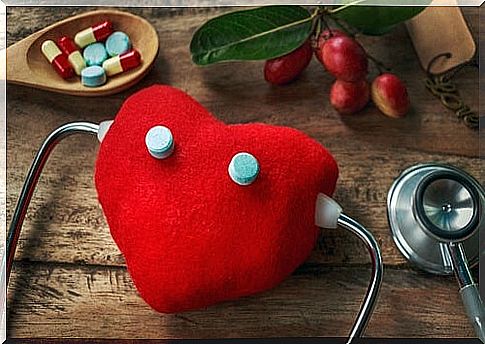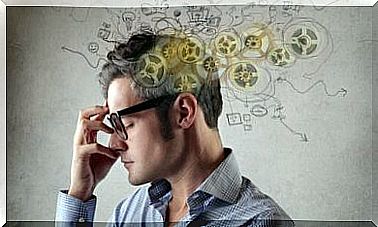Antiarrhythmic Drugs And Their Appropriate Combinations
Antiarrhythmics are drugs used in the symptomatic and preventive treatment of deterioration of cardiac function due to tachycardia and irregular rhythm.
They act by modifying the automatism, refractory periods, and conduction velocity of cardiac cells. However, the goals of antiarrhythmic therapy are to control symptoms and improve survival.
However, the efficacy of antiarrhythmic drugs is moderate and they have a narrow therapeutic window. In some cases, they can even be lethal if not used properly.
Types of antiarrhythmics

Based on their main mechanism of action, antiarrhythmics are classified as follows:
Class I antiarrhythmics
Antiarrhythmics in this group work by blocking sodium channels. Among them, the most used are flecainide and propafenone.
They can be dangerous in patients with certain types of heart problems; especially if they have a previous heart attack or depression of heart contraction function.
In turn, depending on their characteristics, this group is divided into:
- Class IA: includes disopyramide and procainamide; they are of intermediate kinetics. They work by prolonging the duration of the action potential, repolarization, and the PR, QRS, and QT intervals.
- Class IB antiarrhythmics: lidocaine and phenytoin. These drugs have rapid kinetics and reduce or shorten the action potential. They can also shorten repolarization and the QT interval.
- Class IC : they are the most used. They have slow kinetics. They affect action potential and repolarization little. However, they prolong PR and QRS, and have no effect on QT.
Class II antiarrhythmic drugs
In this group are beta-blockers. The most used are atenolol, propanolol, metoprolol and bisoprolol.
Its bradycardic effect stands out, that is, a reduction in heart rate on the sinus and atrioventricular nodes. These drugs can be used in patients with and without structural heart disease.
Class III antiarrhythmics

This group works by blocking potassium channels. The most used are amiodarone and sotalol. Amiodarone is relatively safe in patients with structural heart disease.
Structural heart disease refers to a number of cardiovascular conditions that are different but related, as they are all the result of a similar problem. For example, by an interruption of the natural flow of blood through the internal chambers and valves of the heart.
On the other hand, regarding amiodarone, it has frequent and / or serious side effects at the extracardiac level. An example is that it can cause toxicity in the thyroid glands and in the lungs.
Class IV antiarrhythmic drugs
Class IV antiarrhythmics work by blocking calcium channels. Among them, the most used are verapamil and diltiazem.
Although they are weak as antiarrhythmics, they present bradycardizing properties, acting on the sinus and atrioventricular nodes. In addition, they can be dangerous in patients with depressed cardiac contractile function.
Other drugs
There are two other drugs that do not belong to any of the above groups and that are also used in the treatment of arrhythmias.
- Digoxin : acts by shortening the atrial and ventricular refractory periods. In addition, it has vagotonic properties, which prolongs conduction and refractory periods in the atrioventricular node.
- Adenosine : slows down or blocks conduction in the atrioventricular node. It can also reverse conduction-dependent tachycardias through the atrioventricular node.
Indications for antiarrhythmic drugs

Antiarrhythmics are recommended to treat the following cases:
- End or manage an arrhythmia episode.
- Prevent the recurrence of an arrhythmia.
- Avoid the appearance of serious arrhythmias in specific situations.
Additionally, they are indicated in certain documented tachycardias, based on their efficacy, safety, and proven benefit. In these situations, they are used to relieve symptoms, improve heart performance, and prevent degeneration to a malignant arrhythmia.
When the patient has sustained supraventricular tachycardia, amiodarone, verapamil, digoxin, and adenosine are used. In contrast, if ventricular tachycardia is present, intravenous lidocaine is used. It will be administered during myocardial ischemia, and intravenous amiodarone may also be used.
On the other hand, to depress atrioventricular conduction, digoxin, beta-blockers, verapamil, and amiodarone are administered. When it is necessary to suppress extrasystoles, lidocaine is administered. However, flecainide, amiodarone, and beta-blockers are used to prevent supraventricular and ventricular tachycardias.
Conclution
Although cardiac ablation techniques have undergone great development, the selection of treatment is conditioned by the type of arrhythmia and the patient’s profile ; especially if there is underlying heart disease.









